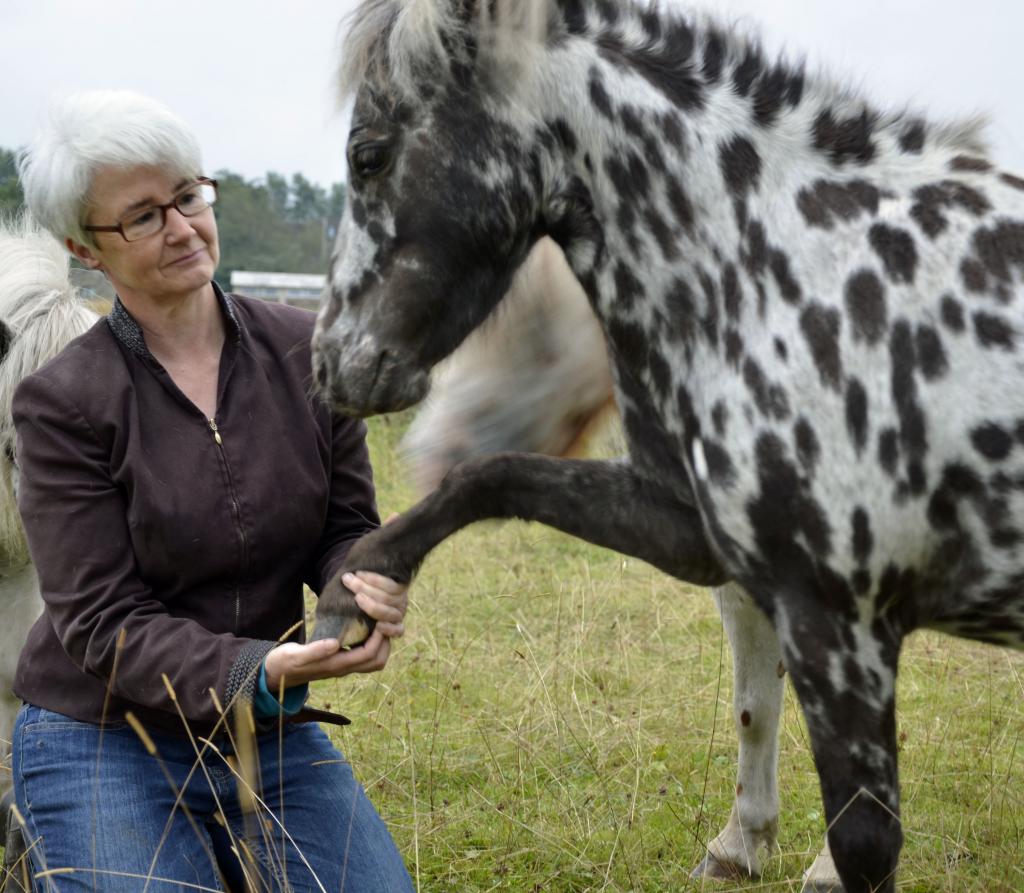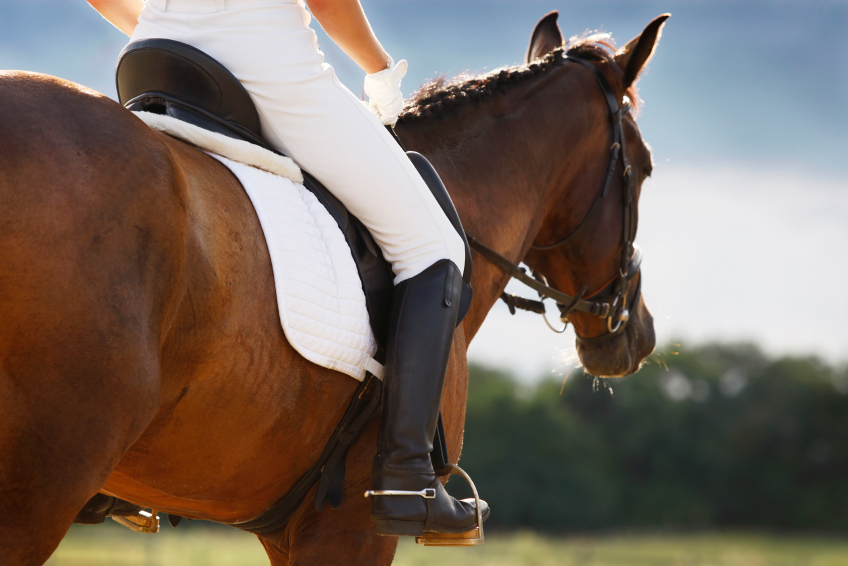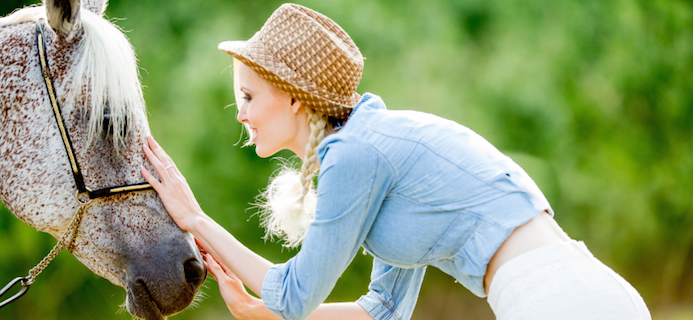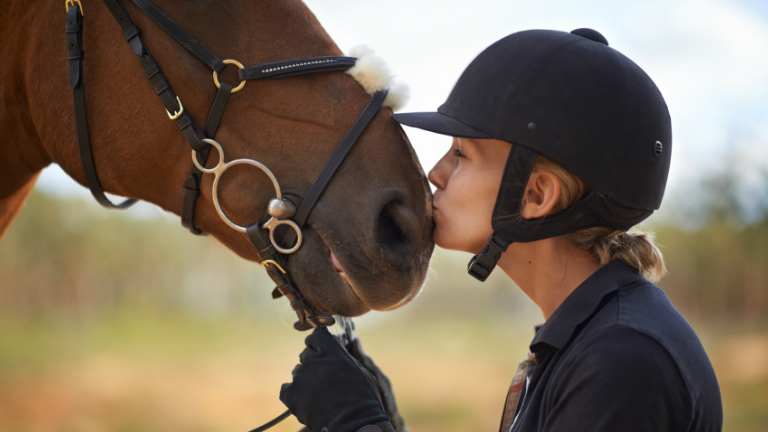After an horrific knife attack Susan Dunne fell into the deep isolation of Post-Traumatic Stress Disorder (PTSD). With therapy failing her she decided to try something new, and discovered the power of horse therapy
When the attack came I was sitting in the office with my back to the door. A pair of hands and something cold and steely pressed against my neck. In the next few minutes or perhaps it was seconds – time had stood still – my body became host to multiple stab wounds and an artist’s palette of enormous bruises. And in that brief period of time my life was changed forever.
Looking back, I perhaps shouldn’t have been too surprised: the odds were stacked high in favour of an attack. I worked at a probation hostel which was then host to five convicted murderers, several suspected ones, and an array of rapists, child sex offenders and muggers. But it never happens to you does it?
A pair of hands and something cold and steely pressed against my neck
The physical injuries were minor compared to the post-traumatic stress which followed. During the attack, perhaps at the point where I curled up foetally on the floor fully expecting to be killed, I had gone out of my body and watched on disassociated as it received the demented attack. The attack stopped – maybe my attacker came to his senses and realized that the alarm bell had rung and the police were on their way; maybe it was because miracles do occasionally happen or perhaps, as the police officer dealing with the case told me a few days later I had just been ‘very lucky’. Whatever the reason, I did not want to go back into my body – it was no longer the safe haven I had so wrongly assumed it to be.
I stopped eating, remained alone at home with the curtains drawn and the doors locked, a bread knife waiting in the hallway for the follow up attack I was convinced was coming.
I stayed outside of it for many months after. I began to shut down, stopped eating (I lost one third of my body weight), remained alone at home with the curtains drawn and the doors locked, a bread knife waiting in the hallway for the follow up attack which I was convinced was coming. The fact that my attacker was found dead of a heroin overdose three days later in an abandoned flat did little to change things. He lurked outside somewhere, haunted my nightmares and my waking moments. For years after I would see him in the streets and dive for cover.

There was plenty of post-attack advice floating about: go on holiday, write about it, eat a good meal, see a counsellor, sue the bastard… None of it was particularly useful. My workplace arranged for a counsellor to get in touch with me. She offered me an appointment in ten days’ time at her work place 17 miles away. This was problematic on two fronts – firstly I fully expected my attacker to have killed me by then anyway, and secondly the thought of going outside had become too terrifying to contemplate. ‘I can’t go out of the house at the moment’ I said when she rang me. ‘That feeling goes away in a few days,’ the counsellor cooed down the phone. I told her she didn’t know what she was talking about before slamming the phone down. I was right – the feelings associated with post-traumatic stress do not just go away in a few days.
So, what do you do? How do you override or come to terms with the impasse that trauma brings? This is where it got tricky. I have Asperger’s and have always been the solitary type. I had worked at the probation hostel because it allowed me to work alone at nights, I had very few friends and there was no family support. My sole source of company was that of my Dalmatians who kept me grounded enough to care for them and who were determined to bring me back to the real world with big sloppy kisses after I had sat for hours, cold and hungry in a slowly darkening room, my mind reliving the events of the attack. Had it not been for the dogs I would have been lost. But in itself this did not help me move on – I needed something more but had no idea what.
Had it not been for the dogs I would have been lost
A chance question from a GP, simple enough in itself but life-changing in its consequences, started the ball rolling. ‘What do you enjoy doing where you have to be inside yourself?’ She asked. By a circuitous route I arrived at horse riding. In fact I hadn’t ridden since I was a child when horses obsessed me to the exclusion of all else. I had moved on, gone to university, done other things but horses still retained a powerful and inexplicable hold on me. I think my GP might have been similarly affected by them. She smiled and said ‘Go and book a lesson and tell me how it went’. It was somewhere between a suggestion and an order. Thank god I obeyed it like an order. I booked a riding lesson and forced myself to go out of the house.

I had my riding lesson – and another, and another. Something strange was starting to happen. For the time I was with horses my fears and dissociation disappeared. Sat on a horse I was fully back inside myself and it was where I wanted to be, back in the body that I had disowned during the assault. As I guided horses around the arena and over poles and round obstacles I slowly began to re-map parts of me – the ankles pressed down, the calves on the horse’s side, the uprightness of the torso and the position of my thumbs on top of the rein. To be in charge of a large animal meant having to take control, giving direction, knowing that not to do so meant trouble. I learned to literally and metaphorically take up the reins, feel again what it was like to have some modicum of control in a world where I had felt powerless and a victim.
I booked a riding lesson and forced myself to go out of the house.
Through sheer fluke I had discovered the healing power of horses. In its more formalised form it is known as Equine Assisted Therapy and is offered as a course of treatment for a variety of physical and psychological problems. All I knew then was that being around horses made me feel good and that in my traumatised state nothing else did. Some years later I read about war veterans being given equine assisted therapy and my first thought was ‘Well finally they’ve caught on to it’.
Something strange was starting to happen. For the time I was with horses my fears and dissociation disappeared.
Being damaged, cut-off, distrustful and isolated can make reaching out for help to other humans nigh on impossible but horses are less complex, they demand less, they don’t talk, they don’t give well-meant but fatuous advice or claim to know what they do not know. Horses provided me with a simple accepting presence; as I sat on them and connected back to myself they brought me into the here and now – and for people with trauma that is the one place where they struggle to be. Horses were my incentive to go outside, to move in a different environment and learn how to trust again
Through sheer fluke I had discovered the healing power of horses
I experienced other treatments for PTSD. My work place belatedly funded me to have a course of EMDR (eye movement desensitisation and reprocessing). I sat in a psychologist’s office in high summer watching a private Wimbledon on screen as my eyes followed an object tick-tocking back and forth and I sought to recall the harrowing details of the attack, my brain supposedly processing them through and helping me move on as I did so. There was also the deep breathing technique the psychologist taught me to encourage me to let go of the shallow breathing state I had gone into and which remained, keeping me in a permanent state of panic. ‘Which side of your nose is most full?’ he asked.
‘Sorry?’
‘Which side has most snot in it?’
I learned to close the least full one and allow air to escape from the other like a slowly deflating balloon.
To be in charge of a large animal meant having to take control, giving direction. I learned to literally and metaphorically take up the reins
Finally I got to see a counsellor who did not offer platitudes and who encouraged me to see the post trauma guilt I was feeling for what it was – that irrational survivor guilt where from the lofty vista of hindsight we wonder what we did wrong/should have done differently/ought not to have done at all. I belatedly started taking a prescription of Prozac which made me feel calmer.
Perhaps they all worked in their own way but being around horses was the only treatment (though it was not prescribed as such) which gave me an instant feel good factor, the only one which I actively sought and looked forward too, the only one which I wanted more and more of. The supposed benefits humans derive from being around animals is nothing new – dentists have been foiling us with fish tanks in the waiting room for years to make us feel calmer. Studies have linked the release of the feel-good hormone oxytocin with human animal interaction. Animals it seems can make us more human, more able to respond, interact socially, to relax and feel good. As someone on the autistic spectrum as well as someone in a state of post-traumatic stress this was quite a revelation.
Things moved on over several years. I bought my own horse which acted as my biggest incentive to go out. I relearned how to go outside my own front door without fear and learned that I felt most safe and happy when out in the field amongst herds of horses. I travelled alone to Mongolia, that mecca of the horse world, where I rode horses on the Steppes and for the first time in years never thought about the assault once.
Animals it seems can make us more human, more able to respond , interact socially, to relax and feel good
These days I run an outreach care service with miniature ponies who will happily go into day and residential centres and up in lifts to visit the most cut off in their bedrooms (poo dutifully deposited in specially fitted bags in case you wondered). I’ve watched the ponies work their mini miracle on hundreds of people – bringing out smiles, gestures, speech where they have long been closed down or shut off. None of it surprised me. Now I have four horses of my own – and no money in consequence. That GP – that wonderful insightful GP with that simple question has a lot to answer for.
Horse therapy – what is it?
Known as Equine Assisted Therapy (EAT), it brings clients, therapists and horses together to promote emotional growth and well-being. Through equine activities, clients work through a series of on the ground exercises which encourage them to think and act in ways they may not have thought of before.
Horses can be particularly beneficial as social animals which mirror our behaviour back to us and bring us into the present moment. Often bonding with the horse is a major component of the therapy which helps promote trust and openness.
EAT can be used for a variety of issues including PTSD, addiction, mental health and self-development. There is no age limit and no previous experience is necessary.
Equine Assisted Learning is similar but the focus is on learning specific skills such as team work and problem solving and as such it can be used for corporate training.
Susan Dunne has Asperger’s. She lives in West Yorkshire and runs Pat a Pony an award winning pony therapy service. She is the author of A Pony in the Bedroom: a journey through Asperger’s, Assault and Healing with Horses published by Jessica Kingsley 2015.
Like this article? Sign up to our newsletter to get more articles like this delivered straight to your inbox.






















































